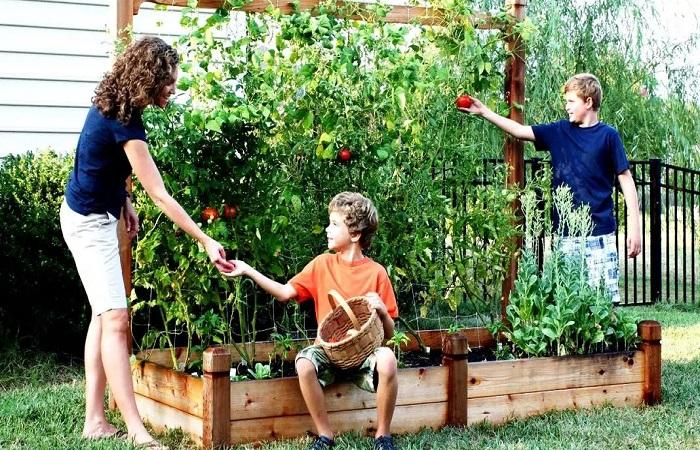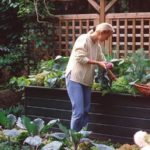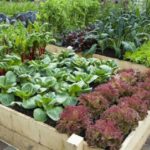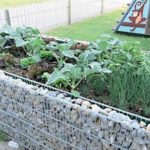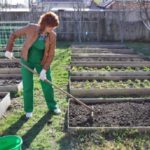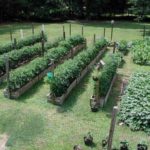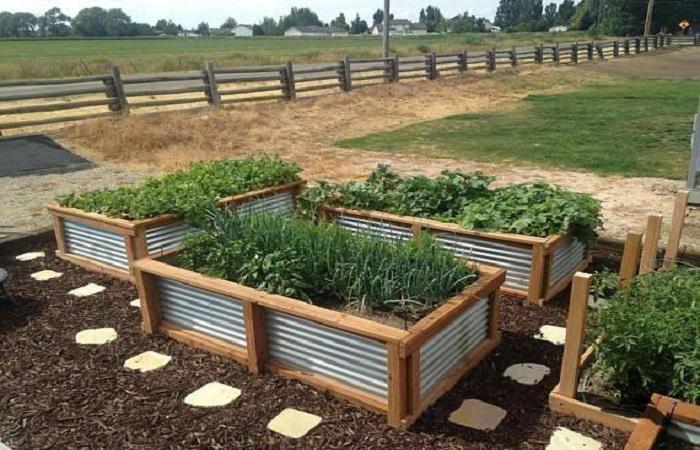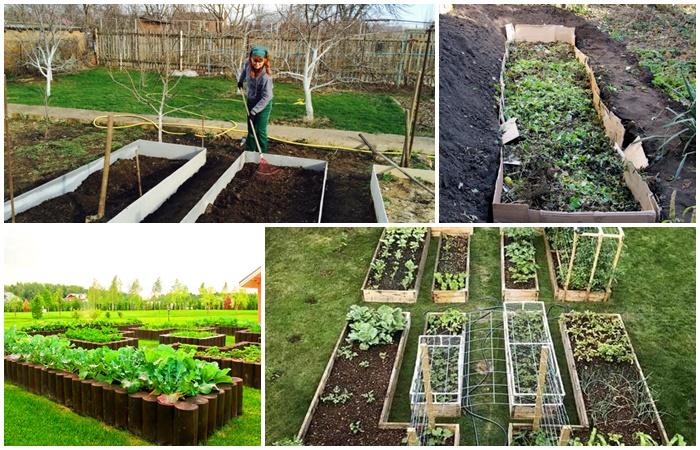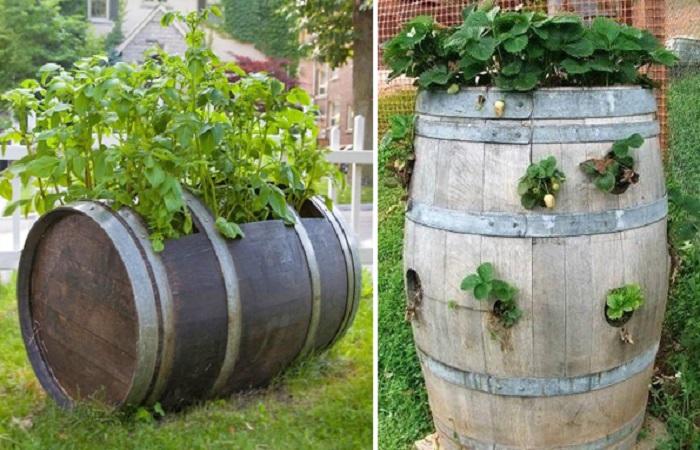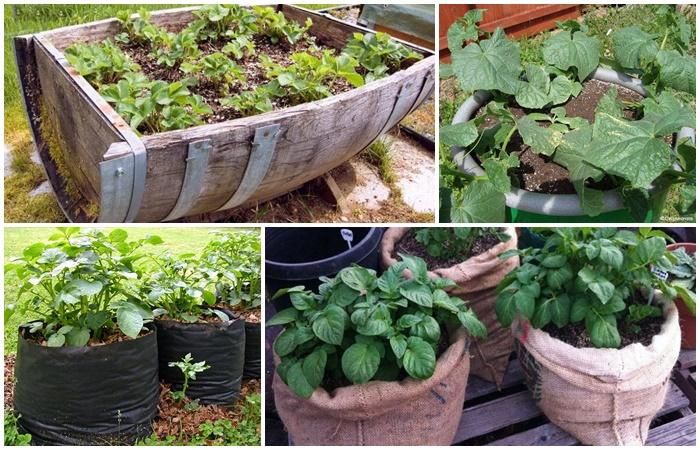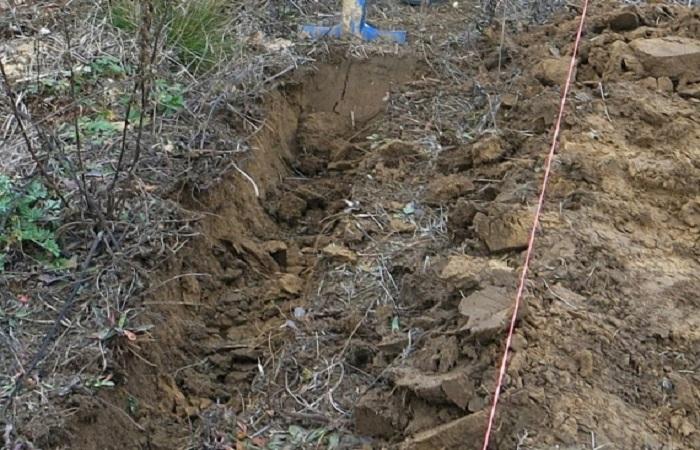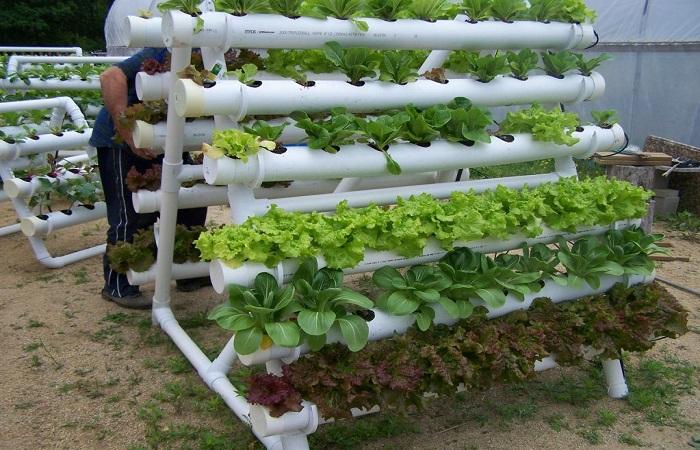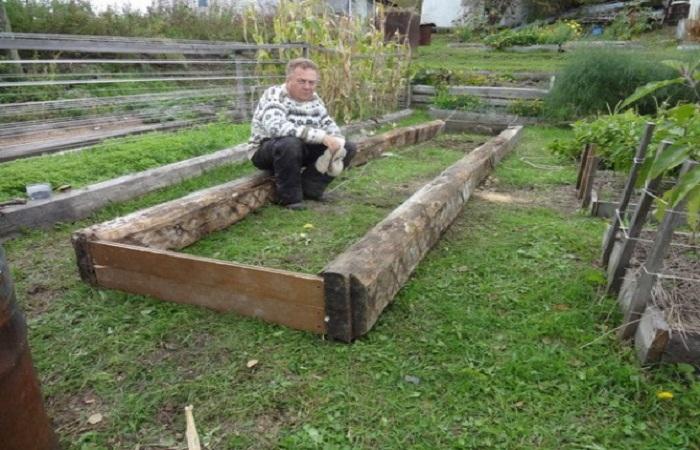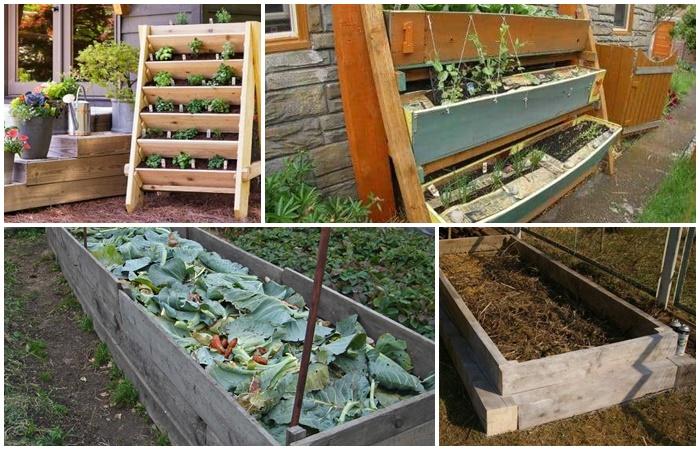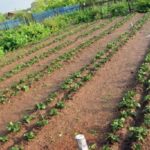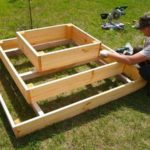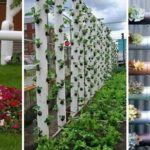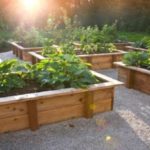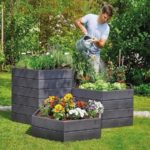Growing fruit plants takes a lot of time and effort from the gardener, and weekends spent at the dacha become working days, since each crop requires agrotechnical care. And, even despite constant watering, loosening, and fertilizing, there is no guarantee that the summer resident will collect the amount of fruit he expected. Using smart beds not only reduces labor costs, but also increases the amount of harvest.
- What is a smart garden and how is it different from a regular one?
- Advantages and disadvantages
- Types and sizes of lazy beds
- Box
- Containers
- Beds in a barrel
- Bags
- Ditches and trenches
- Vertical
- Location
- DIY making
- Box-bed
- Beds with drainage
- High
- Vertical structures
- Warm beds
- Selection of plants and planting techniques
- Common mistakes
What is a smart garden and how is it different from a regular one?
To make a decision about creating smart beds on your garden plot, you should first understand what it is and how such a garden differs from a regular one. This arrangement of the garden allows you to reap a rich harvest with minimal effort and time.
The complex for arranging smart beds includes the following procedures:
- special technologies for growing crops in high beds;
- competent planning of planting;
- use of covering material;
- laying down organic mulch;
- regular crop rotation;
- use of drip irrigation for plants.
All this together constitutes a smart vegetable garden. This area differs from a regular garden plot in that seeds and seedlings are planted on raised or high beds, which create favorable conditions for the subsequent cultivation of crops.
The arrangement of such a wonderful garden at the dacha begins with planning the site. They arrange the growing beds based on the illumination of the area, because without sufficient sunlight it will not be possible to grow strong and healthy plants. After this, they are engaged in laying water pipes that will be used to irrigate crops, and only then they begin to arrange the beds themselves.
Advantages and disadvantages
Summer residents who have been growing vegetables for more than one season using smart beds have identified a number of advantages of this method of cultivating crops.
Pros of raised beds:
- increased productivity with low labor costs;
- the ability to make several beds with different soil compositions, tailored to the needs of a specific crop;
- the speed of warming up the earth with the arrival of spring, which allows for early sowing of seeds and, accordingly, increasing the speed of fruit ripening;
- absence of sharp fluctuations in soil temperatures, which has a beneficial effect on plant development;
- the ability to preserve the mulch layer longer, thanks to the sides it is not blown away by the wind;
- reducing the area that needs to be dug up and subsequently weeded out;
- the presence of good drainage, which prevents rotting of the root system;
- no need to bend low when caring for crops;
- the possibility of organizing a high bed in any area with good lighting, even where the soil is rocky;
- aesthetic appearance of a personal plot;
- To make work easier when weeding paths between beds, some gardeners simply fill them with fine gravel.
If there is an opportunity and appropriate resources, drip irrigation is installed, then the soil will remain moist for a long time, and the summer resident will not have to spend a lot of time irrigating the plants.
The following points are also considered disadvantages of raised beds:
- the likelihood of bolting of cold-loving crops due to overheating of the soil;
- the need for frequent application of mineral and organic fertilizers due to limited space;
- significant material and physical costs for creating such a vegetable garden;
- high risk of rapid proliferation of pathogenic microorganisms that have penetrated the soil.
After weighing all the advantages and disadvantages, they decide on the feasibility of arranging smart beds.
Types and sizes of lazy beds
Before creating such a vegetable garden, it is worth studying the types of smart beds and their optimal sizes.
Box
A box made from treated boards can be of any length, it depends on the size of the plot and what the gardener plans to plant. But width is a very important parameter; it is necessary to calculate it so that it is convenient to care for crops. As a rule, they make sure that there are no more than two rows of plants in one box. Approximate dimensions: length - from 2 to 5 m, width - from 90 to 120 cm.
Containers
When planning to grow crops in containers, you need to pay attention that the size of the container must correspond to the volume of the plant’s root system. They use plastic pots, old tin tubs, and wooden boxes for planting. Experienced gardeners recommend giving preference to containers made of clay and wood (natural materials), since when heated they do not emit harmful substances that can penetrate into fruit crops.
If plants with large root systems are planted, the width and height of the container should be at least 25-30 cm; for crops with compact roots, pots with dimensions of 20x20 are suitable.
Beds in a barrel
Beds arranged in barrels allow you to save space on your garden plot and make it easier to care for plants. Most often, cucumbers are grown in such containers. Metal barrels with a volume of 200 liters are used for sowing seeds.As soon as the snow melts, they are installed in a sunny place and organic residues are poured into them - vegetable peelings, mowed grass, and wait several days until the mass settles. This procedure is carried out several times.
In mid-May, fertile soil is covered with a layer of 15 cm, cucumber seeds are sown and watered. About 10 seeds are planted per container so that the distance between them is about 15 cm.
Bags
In this case, high-density plastic bags are purchased; such beds are used for planting strawberry bushes. Also, to create beds, products made from burlap or any dense fabric are used. The latter option has undeniable advantages over polyethylene - such bags have high throughput, and plants feel more comfortable in them.
After purchasing the containers, they are filled with nutritious soil and 15 cm long slits are made, into which strawberry bushes are then planted. The bags can be placed in rows, or in a checkerboard pattern. This method allows you to collect clean berries.
Ditches and trenches
The trench method is used for growing potatoes, tomatoes and cucumbers. The length of such ditches is arbitrary and depends on the size of the area. The depth and width of the trenches is from 35 to 40 cm. This method of cultivating crops allows you to harvest the crop 30-40 days earlier.
Vertical
Such beds are created from plastic pipes, bags, ceramic and plastic pots, as well as from construction mesh and old car tires. Their height varies from 100 to 200 cm.
Location
When planning the location of smart beds, you must remember that most plants need good lighting; in the shade, the number of fruits set is reduced.Areas that are shaded during the day should be designated as ornamental crops or a recreation area. In addition, it is necessary to take into account the degree of moisture-loving plants; The more watering is needed, the closer the bed is located to the source of water.
In order for the entire area of planted plants to bear fruit, the beds are located strictly from north to south.
DIY making
To make smart beds with your own hands, you will need tools and time.
Box-bed
Before you start creating a bed made of wood, the material must be prepared using special impregnations, in this case the service life of the structure will be extended.
The further work order is as follows:
- The support bars are attached to the boards; the length of the bar is selected taking into account the fact that it will be driven 20-25 cm into the ground.
- Knock down the box, making sure that there are no gaps between the boards.
- Install the finished structure in the chosen place and drive it into the ground, using a level to check the horizontal position.
Beds with drainage
Such beds are installed in areas with marshy soil so that excess moisture does not lead to rotting of the plant root system. Work begins by removing 50-60 cm of soil and laying a 20 cm layer of sand at the bottom of the trench. After this comes a layer of sawdust, humus and fertile soil. As a result of this, good gas exchange and removal of excess liquid occurs in the beds. Options with drainage are well suited for growing root vegetables.
High
Raised beds are traditionally used for growing melons. For this, boxes or other containers are prepared, which are installed on legs with a height of at least 30-40 cm.You can use not only wood, but also metal, but in this case you will need protection against corrosion.
First, make a box for planting plants using a hammer and plane or welding, and then attach the legs to the box. When installing, the legs are buried slightly into the ground so that the bed is stable.
Vertical structures
Vertical options are often created from plastic pipes. The step-by-step instructions are as follows:
- Prepare 2 pipes - a wide one and a narrow one, which is slightly longer.
- In the latter, many small holes are made 2/3 of the way through which water will flow to the plants.
- Holes are made in exactly the same way, but with a diameter of 20 cm, in a wide pipe.
- They insert one into the other, gravel is poured onto the bottom to give stability, and then fertile soil is added. Plants are planted in large holes.
Warm beds
To create a warm structure, dig a trench 40 cm deep. After this, 3 layers of organic matter are laid:
- the first is paper, chopped stems and branches;
- the second - rotten vegetables, sawdust, turf, tops;
- the third is fallen leaves and grass.
Fertile soil is poured on top and plants are planted.
Selection of plants and planting techniques
You can plant several different plants in one bed, which will save space on your site. For example, in one box or trench the following go well together: cabbage with dill and tomato, carrots with onions and peas, and legumes with potatoes.
When planting, pay attention to ensure that taller plants are in the background and do not create a shadow for short ones.
Common mistakes
Gardeners creating a smart garden for the first time make common mistakes:
- the beds are placed incorrectly;
- use inappropriate material;
- rarely water the plants;
- neglect the application of fertilizers.

